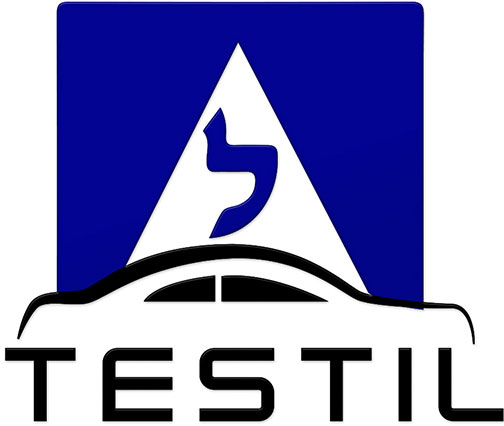Question:1
What are the tedious driving conditions described in the following picture?

Category : Safety
Question:2
What are the actions you are required to take, before intentionally pulling onto the “hard shoulder” of a non-urban road?
Category : Safety
Question:3
What are you required to do when the truck in the picture enters your driving lane?

Category : Safety
Question:4
How can you avoid collision according to the indications in the following picture?
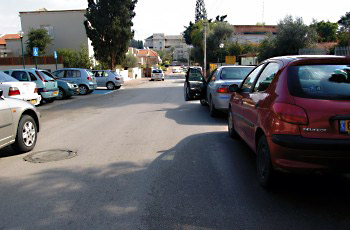
Category : Safety
Question:5
Under which conditions is it advised to turn on the lights during the day?
Category : Safety
Question:6
How are you required to conduct yourself in the following road section?

Category : Safety
Question:7
How would you conduct yourself according to the following picture?

Category : Safety
Question:8
When a driver approaches a narrow bridge, he should:
Category : Safety
Question:9
What is a driver always required to do when another vehicle “sits on his tail”?
Category : Safety
Question:10
How should the driver of the silver vehicle respond, when the driver of the dark vehicle wants to park his vehicle in reverse between two vehicles next to the sidewalk?

Category : Safety
Question:11
The white vehicle (1) and the silver vehicle (2) at the intersection, intend to enter the same road. Which of them is obliged to give right of way?
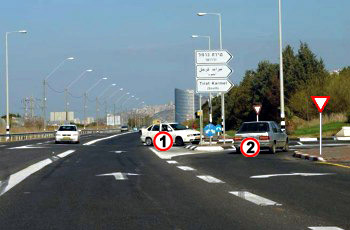
Category : Safety
Question:12
The white vehicle’s driver is merging into traffic. how would you behave?

Category : Safety
Question:13
According to the following picture, what caused the poor field of vision?

Category : Safety
Question:14
What in the conduct of the blue vehicle is improper?
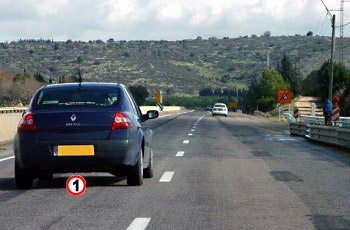
Category : Safety
Question:15
What is a driver required to do after crossing a flooded road section?
Category : Safety
Question:16
What are the reasons for a vehicle skidding on a road?
Category : Safety
Question:17
What is the correct sentence?
Category : Safety
Question:18
Which of the following accessories reduces passenger impact severity during an accident?
Category : Safety
Question:19
How would you conduct yourself when approaching a place, as described in the picture?

Category : Safety
Question:20
What should you do to reduce the effect of dazzle (blinding) during the dark?
Category : Safety
Question:21
How can we overcome the problem of tiredness whilst driving?
Category : Safety
Question:22
What limitations occur on the road ahead of you?
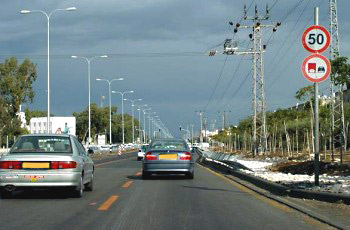
Category : Safety
Question:23
Which of the following sentences is correct as regards to other drivers?
Category : Safety
Question:24
When you arrive with your vehicle to the place that is illustrated in the following picture, you must:
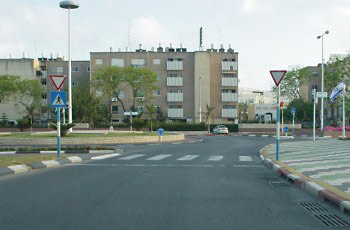
Category : Safety
Question:25
How would you conduct yourself in the following situation?

Category : Safety
Question:26
What is the best way to reduce the dangers whilst driving in reverse?
Category : Safety
Question:27
When a driver is blinded by the sun, he should:
Category : Safety
Question:28
Is there a connection between the driver’s judgment and the use of drugs and alcohol?
Category : Safety
Question:29
What is the most important principle when turning right in an intersection?
Category : Safety
Question:30
How can we avoid danger when we start driving and when we merge with traffic?
Category : Safety
